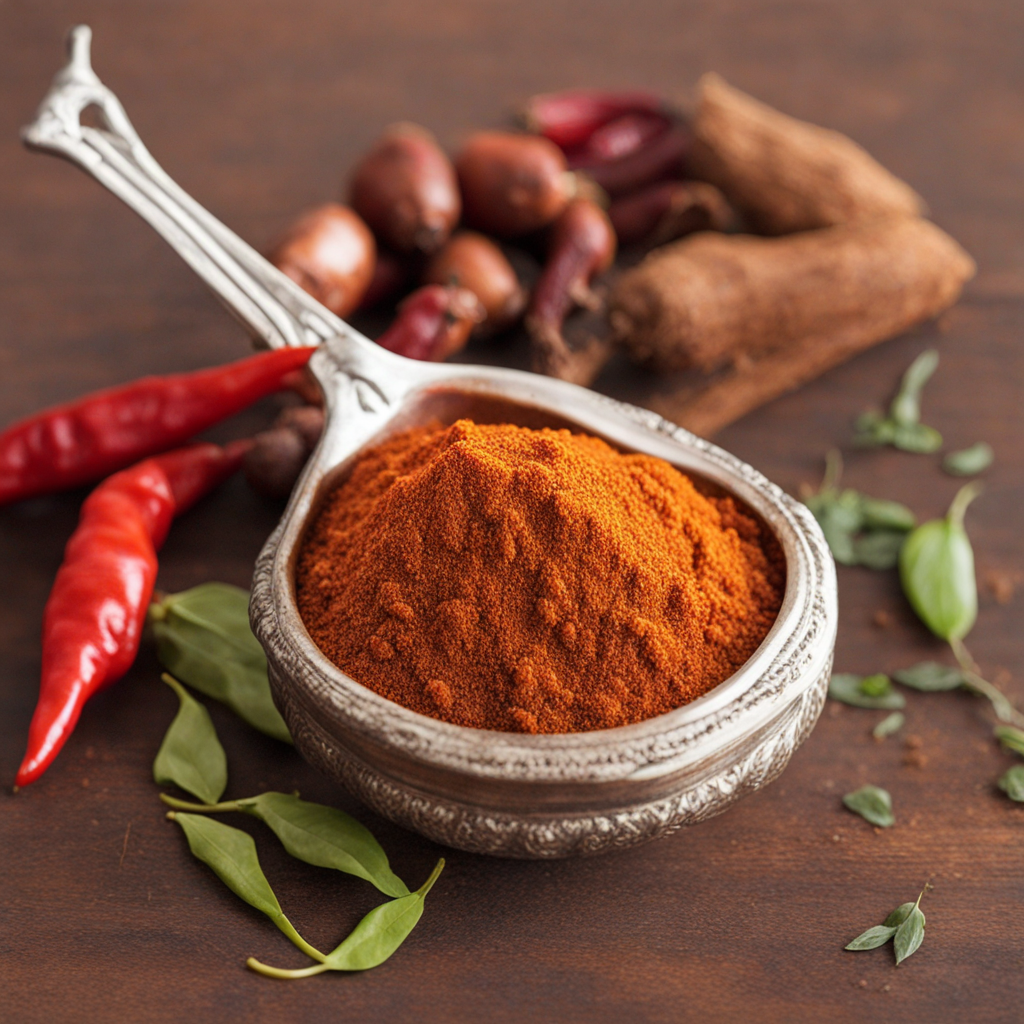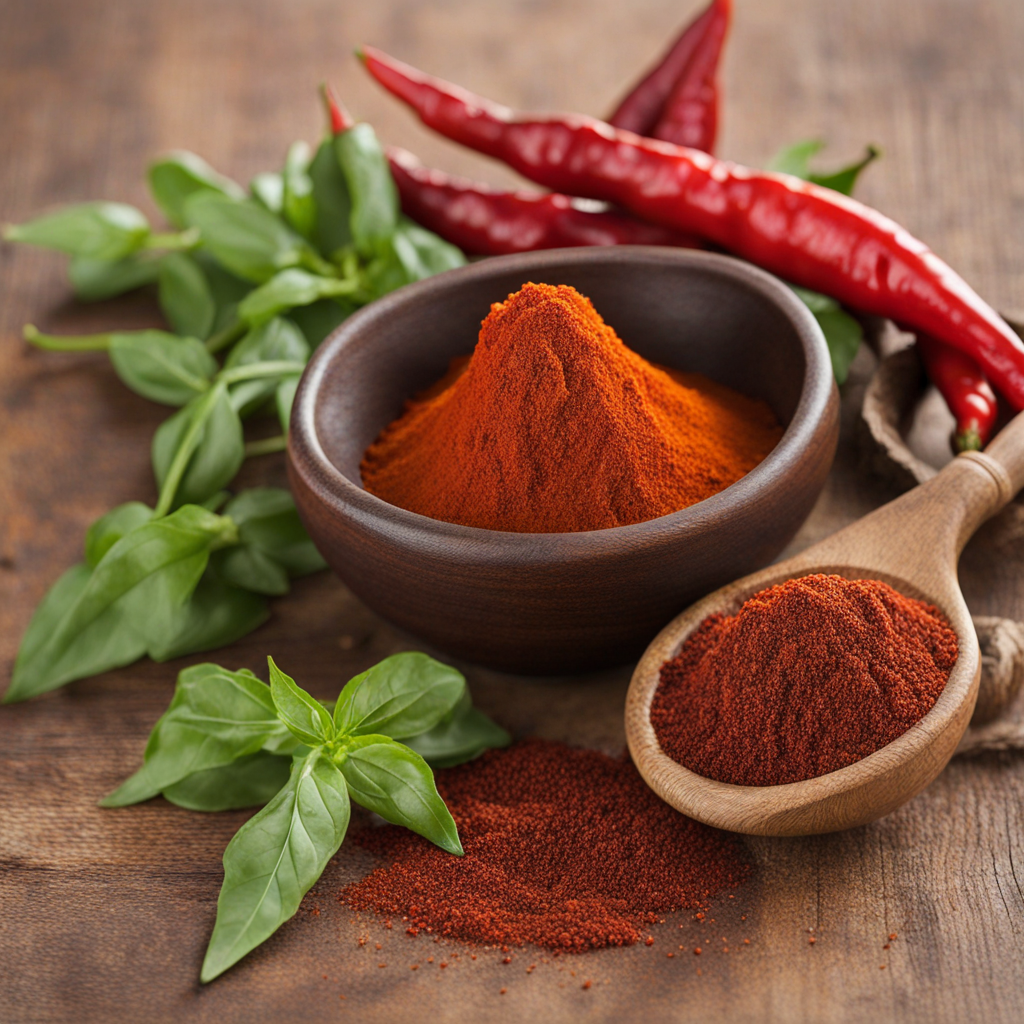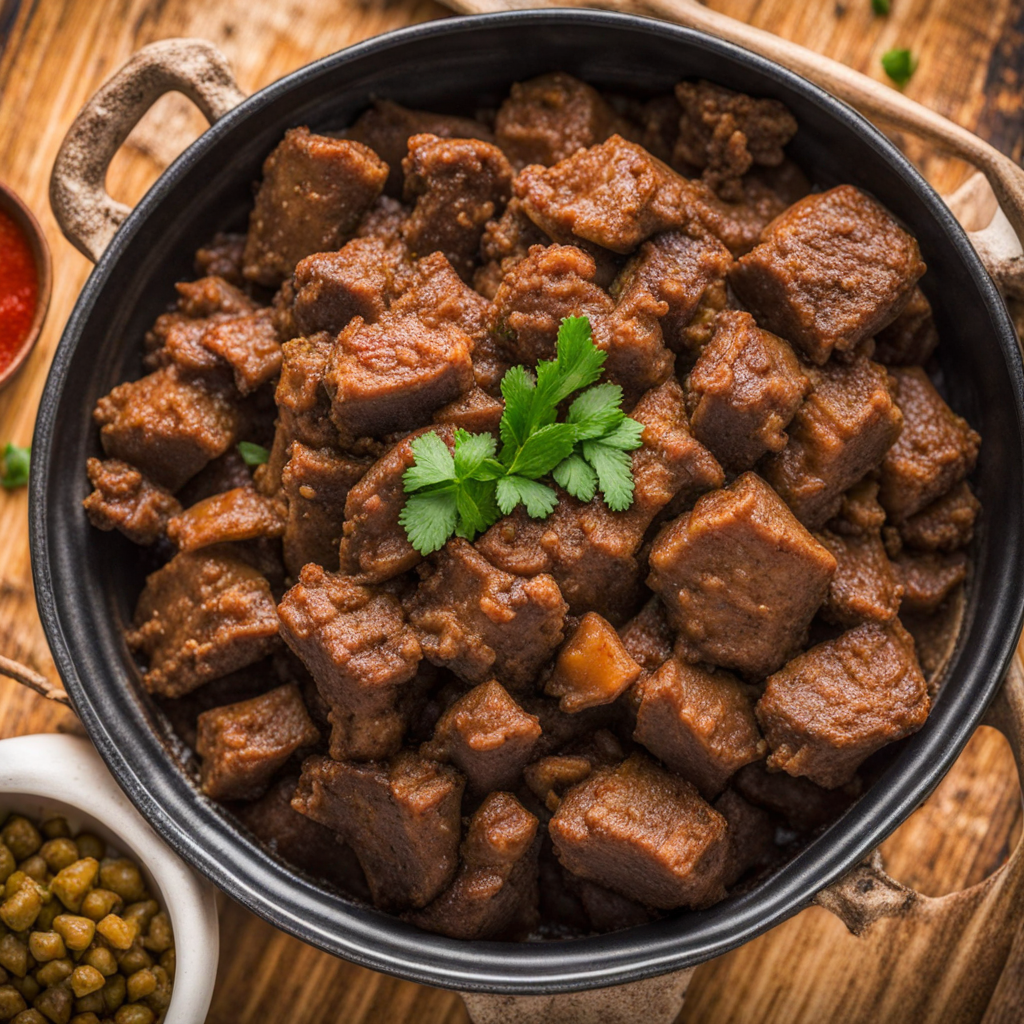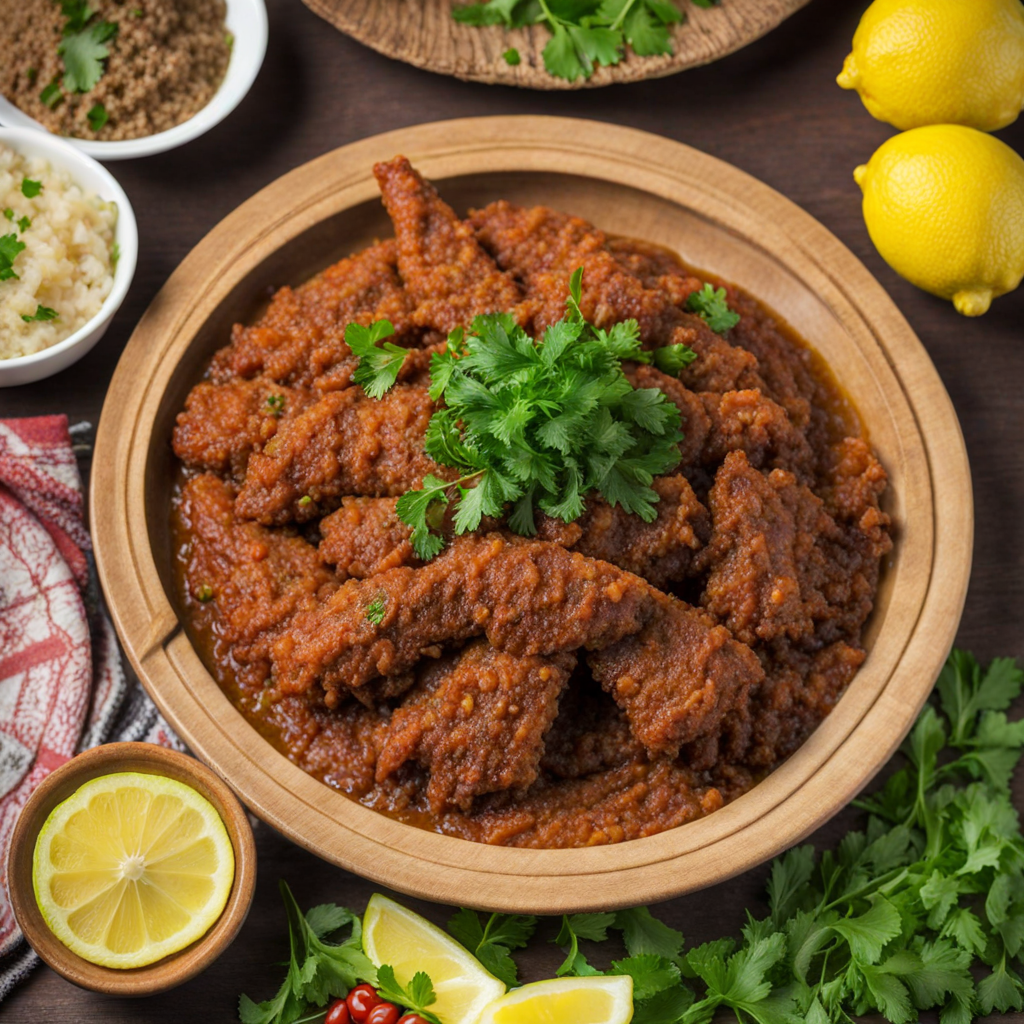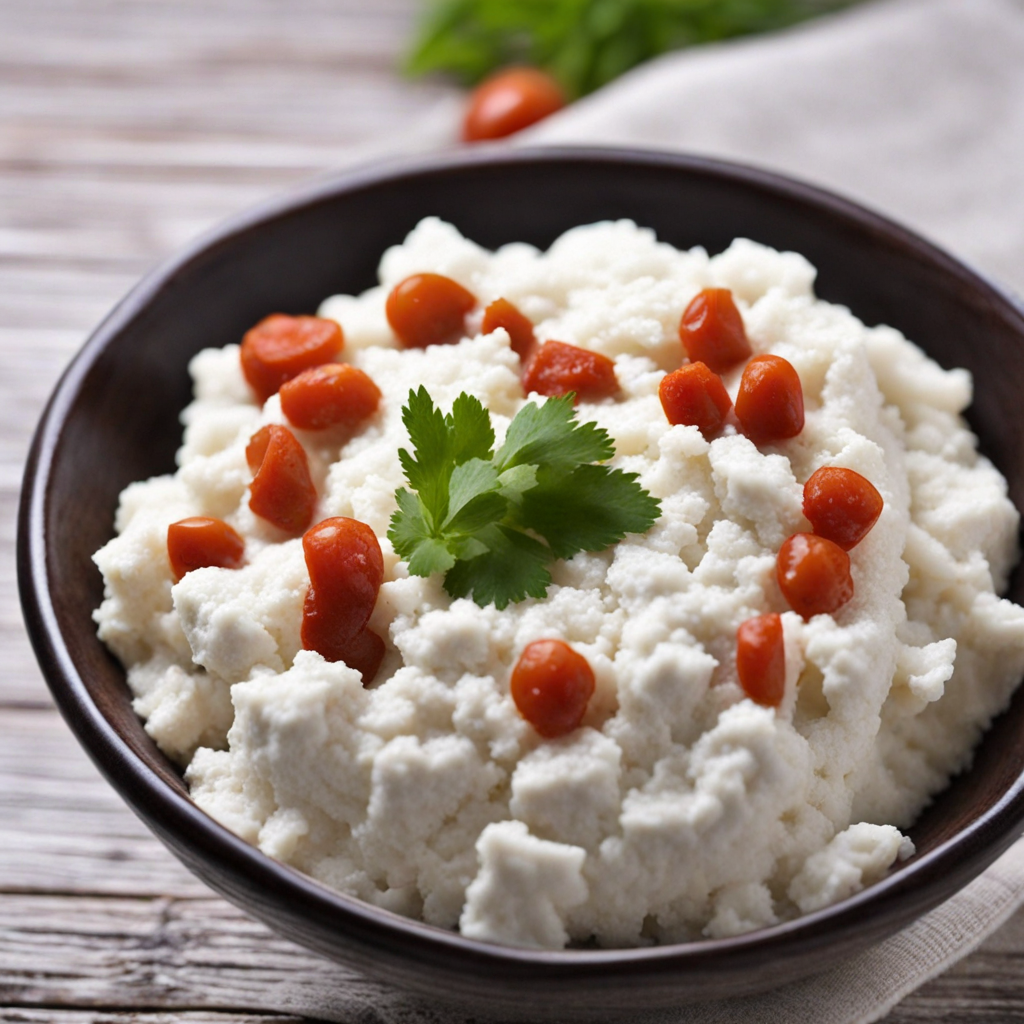Berbere
Berbere is a vibrant and aromatic spice blend that serves as the cornerstone of Ethiopian cuisine, bringing a unique and complex flavor profile to various dishes. This versatile mix typically features a combination of spices like paprika, garlic, ginger, coriander, cumin, and fenugreek, along with a touch of heat from cayenne pepper. The result is a rich, earthy flavor with a warm, slightly spicy kick that transforms ordinary ingredients into extraordinary meals, making it a must-try for anyone eager to explore new culinary horizons. When used in traditional Ethiopian dishes such as Doro Wat (spicy chicken stew) or Misir Wat (spicy lentil stew), Berbere not only enhances the taste but also adds a beautiful red hue that makes the dishes visually appealing. The slow-cooked nature of these meals allows the spices to meld together, creating a deep, satisfying flavor that is both comforting and invigorating. Berbere is often paired with injera, a traditional sourdough flatbread, which acts as a perfect canvas to soak up the rich sauces, making each bite an explosion of flavor. Beyond stews, Berbere can be utilized in a variety of cooking methods, from marinades for grilled meats to seasoning for roasted vegetables. Its bold flavor can elevate simple dishes, adding depth and character that invites culinary creativity. Whether you're a seasoned spice enthusiast or a curious novice, experiencing Berbere is a delightful journey into the heart of Ethiopian cuisine, offering a memorable taste that lingers long after the meal is over.
How It Became This Dish
The History of በርበሬ (Berbere) from Ethiopia #### Origins Berbere, a quintessential spice blend of Ethiopian cuisine, has roots that trace back to ancient times in the Horn of Africa. The term "berbere" itself derives from the Amharic word "berbere," which means "to be hot" or "to burn," a fitting description for its fiery flavor profile. The blend is composed of a variety of spices, primarily including chili peppers, garlic, ginger, and a range of aromatic spices such as Ethiopian korarima (a type of cardamom), fenugreek, and black pepper. Historically, Ethiopia has a rich agricultural tapestry, and the spices used in berbere reflect the diverse climate and geography of the region. The unique combination of spices that forms berbere likely evolved over centuries, influenced by the trade routes that connected Ethiopia to the Arabian Peninsula, the Indian subcontinent, and beyond. The introduction of chili peppers, a relatively new ingredient from the Americas brought by European traders in the 16th century, transformed traditional spice blends, making berbere distinctively spicy and complex. #### Cultural Significance In Ethiopian culture, food is deeply intertwined with social rituals and spiritual practices. Berbere is not just a seasoning; it is a symbol of hospitality and communal identity. Ethiopian cuisine often revolves around shared meals, served on a large platter lined with injera, a sourdough flatbread made from teff flour. Dishes seasoned with berbere, such as doro wat (spicy chicken stew) and sega wat (beef stew), are staples of Ethiopian feasts and celebrations, particularly during holidays and religious observances. Ethiopia's Christian Orthodox tradition has also played a role in the use of berbere during fasting periods, where the blend is used to create rich, flavorful vegetarian dishes. The spice blend provides depth and warmth to stews made from lentils, vegetables, and legumes, ensuring that meals remain satisfying and delicious even without meat. Moreover, the preparation of berbere itself is often a communal affair, with families coming together to grind the spices and mix the ingredients, creating an opportunity for bonding and sharing culinary knowledge. The act of making berbere is steeped in tradition and is often taught from one generation to the next, making it a cherished family recipe in many households. #### Development Over Time As Ethiopia entered the modern era, the significance of berbere has only grown. In recent decades, there has been a resurgence of interest in traditional Ethiopian cuisine, both within the country and in the diaspora. Factors such as globalization and increased migration have allowed Ethiopian cuisine, including berbere, to gain popularity in international food scenes. Restaurants serving Ethiopian food have sprung up in cities around the world, introducing a wider audience to the unique flavors of berbere. The spice blend's versatility has led to its incorporation into various dishes beyond traditional Ethiopian cuisine. Chefs and home cooks alike have begun to experiment with berbere, using it in fusion dishes and contemporary recipes. It can now be found enhancing the flavor of roasted vegetables, grilled meats, and even in marinades for seafood, showcasing its adaptability beyond traditional stews. Furthermore, the rise of health-conscious eating has brought attention to the health benefits associated with many of the spices used in berbere. Ingredients like turmeric, ginger, and garlic are celebrated for their anti-inflammatory properties, and interest in natural spices as alternatives to processed seasonings has increased. This shift has allowed berbere to be appreciated not only for its flavor but also for its potential health benefits, making it a popular choice among those seeking to incorporate more natural ingredients into their diets. #### The Modern Berbere Experience In Ethiopia today, berbere remains a staple in both home kitchens and restaurants. The preparation of berbere varies by region, with some families adding their unique touch to the blend, resulting in countless interpretations of this classic spice mix. This regional variation reflects the diversity of Ethiopian culture and cuisine. The commercialization of berbere has also emerged, with numerous brands producing pre-mixed versions for consumers who may not have the time or resources to create their own blends from scratch. These packaged berbere products have made it easier for people around the world to experience Ethiopian flavors, although many purists maintain that the freshest and most vibrant flavors come from hand-blending spices at home. Culinary tourism has flourished in Ethiopia, with many visitors seeking authentic experiences that include cooking classes and traditional meals featuring berbere. This has further solidified the spice blend's role in representing Ethiopian culture on the global stage. #### Conclusion Berbere serves as more than just a spice; it is a testament to Ethiopia's rich culinary heritage and cultural identity. Its origins are deeply rooted in the agricultural practices and trade routes of ancient times, while its evolution reflects the dynamic nature of food culture in a rapidly changing world. The significance of berbere transcends its use as a seasoning; it embodies the spirit of community and tradition, bridging generations and fostering connections among people. As Ethiopia continues to embrace its culinary legacy and share it with the world, berbere remains at the forefront, captivating the palates of those who seek to explore the vibrant flavors of Ethiopian cuisine. Whether enjoyed in a traditional setting or reimagined in contemporary dishes, berbere is a spice that tells a story—a story of resilience, warmth, and the timeless connection between food and culture.
You may like
Discover local flavors from Ethiopia


